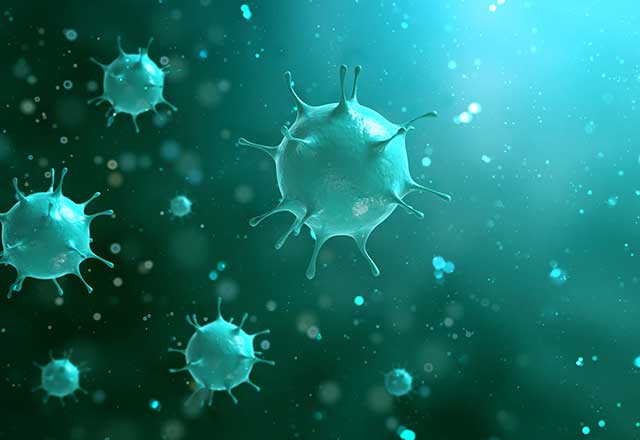How much is the life of one child really worth?
That is part of the question bioethicists and policymakers must consider when discussing influenza’s recent disappearance. In the U.S., the past three flu seasons have resulted in 144 to 199 pediatric deaths from influenza infection. Strikingly, only one pediatric death from influenza was recorded during the 2020–2021 influenza season — a dramatic 99.5% decrease in pediatric flu mortality.
“There’s almost no flu. And how nice is that?” says ethicist Laurie Zoloth from the University of Chicago. “My goodness, if you all had been masked and understood this, we wouldn’t have ever had flu.”
Masking and Health Policies
Experts attribute this decrease in pediatric flu deaths to various COVID-19 public health policies. A systematic review of school closures found that the new coronavirus policies have the potential to reduce influenza transmission, and a randomized study of 689 children from 145 households showed that “adherence to mask use was associated with a significantly reduced risk of influenza infection.”
Although most kids recover from the flu, children of young age and those who are immunocompromised are at highest risk for severe influenza infections requiring hospitalization. Severe infection sometimes results in deaths — deaths that were prevented during the latest flu season. Is keeping influenza below epidemic thresholds good enough, or is there an ethical obligation to prevent pediatric flu deaths further?
James Cameron, a researcher of medical law and ethics, argues that liberty restrictive measures were justified to curb COVID-19 mortality. Yet, in the case of influenza, the government “does not consider [that] preventing these deaths warrants restrictions, or ... the cost of liberty restrictions is too great to prevent these deaths.”
The Negative Impacts
Some of the pandemic measures associated with decreased child flu deaths, such as closing schools, suspending sports and limiting social activities, have negative consequences. Although closing schools limits flu virus transmission among children, it could also harm effective education, socialization and mental well-being, according to a University of Pennsylvania analysis. Every month that schools are closed leads to an estimated $12,000–$15,000 yearly loss in students’ future earnings due to the lower quality of education and reduced motivation that students report. The negative impact of infection prevention measures on children’s educational experiences poses practical and ethical concerns that must be addressed when discussing whether we should close schools, and for how long.
Similarly, long-term masking is not ideal. Studies have found that compliance is difficult to enforce, and masking has become very politicized. Mask wearing is uncomfortable, it can interfere with verbal communication and it is especially difficult for young children.
Although masks reduce flu virus spread, in the long run, they also make people less likely to effectively fight the flu if they only rely on this protective measure. “We may be entering a flu season with a higher level of susceptibility than usual” comments University of Texas epidemiologist Lauren Meyers, due to decreased exposure for well over a year now.
Flu vaccination seems to be the best way to avoid pediatric and adult deaths from influenza, because it provides some immunity against the virus. However, researchers aren’t sure if the 2021–2022 vaccine will be as protective due to fewer data on which influenza strains are most likely to circulate from the past season. It’s also possible that fewer strains will circulate and the vaccine will work well. Some suggest masking may be prudent for upcoming influenza seasons to add another layer of protection to the influenza vaccine.
Balancing Risks
For those who consider the downsides of wearing masks, the conclusion may be that we shouldn’t continue masking to save children from dying due to the flu. They may decide that a world where kids are healthy, educated and socially thriving includes the risk of getting sick. On the other hand, cultural change that embraces an infection prevention measure like masking could save countless lives each year, including hundreds of children in the U.S.
Philosophers recommend balance when choosing which societal values to uphold. The worth of a child’s life is immeasurable, but if it’s the only metric guiding public policy, other worthwhile values may be depreciated in the process. Although experts cannot give an answer about how much risk is appropriate, broader consideration of costs and benefits will drive this conversation further as we emerge from the COVID-19 pandemic and make decisions about how we will confront infectious disease in the future.
[themify_hr]
Related Content
- Anti-Vax to Anti-Mask: Processing Anti-Science Claims During a Pandemic
- Distributing Vaccines: Smallpox and the History of Vaccine Campaigns
- Partnering Toward Discovery Goes Virtual
- Global Threats to Public Health: Dr. Peter Hotez on Climate Change, Conflicts, Poverty and Antiscience
Want to read more from the Johns Hopkins School of Medicine? Subscribe to the Biomedical Odyssey blog and receive new posts directly in your inbox.

Pingback: Patria y Vida: Reflecting from Medical School on Cuba’s Uprising | Biomedical Odyssey
Comments are closed.